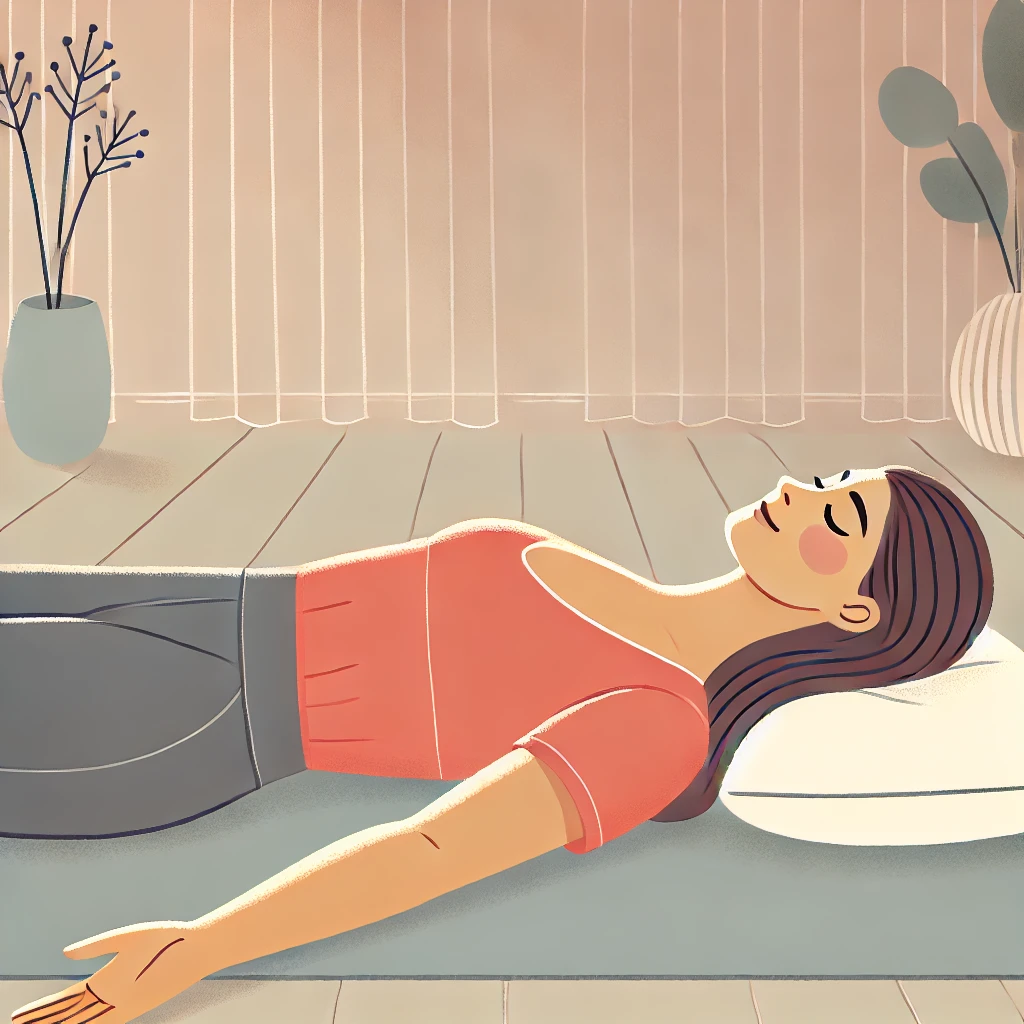✅ ADHD and Progressive Muscle Relaxation
Living with ADHD often involves managing a complex array of "symptoms" such as restlessness, impulsivity, and persistent mental chatter. Progressive Muscle Relaxation (PMR) is a scientifically supported technique that can significantly help reduce these "symptoms " by teaching individuals to alternate between tensing and relaxing different muscle groups. This method not only aids in relaxation but also enhances one’s ability to identify and control the physical manifestations of stress and anxiety.

🧠 The Science Behind PMR for ADHD
Research indicates that PMR can be particularly effective for ADHD women, who often experience higher-than-average levels of physiological arousal. PMR has been shown to decrease cortisol levels — a stress hormone — and increase serotonin, which can help regulate mood, anxiety, and focus. Studies suggest that regular practice of PMR can lead to improved emotional regulation and reduced hyperactivity, which are common challenges for those with ADHD.
📝 Detailed Step-by-Step Guide to Progressive Muscle Relaxation
🛋️ Setting Up for Success
- ✅ Find a Quiet Space: Start by finding a comfortable, quiet place where you won’t be disturbed. This can be any place in your home where you feel at ease.
- ✅ Minimize Distractions: Turn off any devices that might interrupt you and inform others that you need some uninterrupted time.
🧘 PMR Technique
- ✅ Choose Your Position: Sit or lie down in a comfortable position. You can use a chair, a bed, or a yoga mat on the floor.
- ✅ Start with Deep Breathing: Take a few deep breaths to begin relaxing. Inhale through your nose for four seconds, hold for two seconds, and exhale through your mouth for six seconds.
🔄 Progressive Muscle Relaxation Sequence
- ✅ Forehead: Tense the muscles in your forehead by raising your eyebrows as high as possible. Hold this tension for five seconds, then release and notice the sensation of relaxation.
- ✅ Jaw: Tightly clench your jaw for five seconds, then release and allow it to go loose.
- ✅ Shoulders: Raise your shoulders up to your ears, hold for five seconds, then relax them down.
- ✅ Arms and Hands: Tense your arms and clench your fists. Hold this for five seconds, then relax.
- ✅ Chest and Stomach: Take a deep breath and hold it, tensing your chest and stomach muscles. Hold for five seconds, then exhale and relax.
- ✅ Legs and Feet: Tense the muscles in your legs and curl your toes. Hold for five seconds, then relax.
🧘♀️ Completing Your Session
- ✅ Finish with Deep Breathing: After you’ve gone through all the muscle groups, finish with a minute of deep breathing.
- ✅ Reflect: Spend a moment to reflect on the physical and mental feelings of relaxation.
⏰ Incorporating PMR into Daily Life
To reap the full benefits of PMR, consistency is key. Practicing PMR daily is recommended, ideally at the same time each day to establish a routine. This regular practice can help in gradually reducing the intensity of ADHD symptoms, leading to better stress management and focus.
🛠️ PMR as Part of a Holistic Approach to Managing ADHD
While PMR is an effective tool for managing ADHD symptoms, it is most beneficial when used as part of a broader, holistic approach. Combining PMR with other techniques such as medication, cognitive-behavioral therapy, and lifestyle changes can significantly enhance its effectiveness. A balanced diet, regular physical activity, and sufficient sleep are all crucial elements in supporting the benefits of PMR. Additionally, consulting with a healthcare professional can provide personalized strategies tailored to your specific needs.
📝 Conclusion
Progressive Muscle Relaxation is not just a technique for relaxation; it's a tool for empowering individuals with ADHD to manage their symptoms more effectively. By incorporating PMR into your daily routine, you can enhance your ability to calm both your mind and body, leading to improved overall well-being.
❓ FAQs
1. What is Progressive Muscle Relaxation? Progressive Muscle Relaxation (PMR) is a technique that involves tensing and then relaxing different muscle groups in the body to promote physical and mental relaxation.
2. How often should I practice PMR for ADHD? For best results, it’s recommended to practice PMR daily, ideally at the same time each day to build a consistent routine.
3. Can PMR replace medication for ADHD? While PMR can be a powerful tool for managing ADHD symptoms, it is most effective when used in conjunction with other treatments such as medication or therapy. Always consult with a healthcare provider before making changes to your treatment plan.
4. Is PMR effective for children with ADHD? Yes, PMR can be adapted for children with ADHD and can help them manage stress, anxiety, and hyperactivity. It’s important to modify the technique to suit a child’s age and developmental level.
5. How long does it take to see results from PMR? With regular practice, some individuals may begin to notice benefits within a few weeks, while others may take longer. Consistency is key to achieving and maintaining results.

